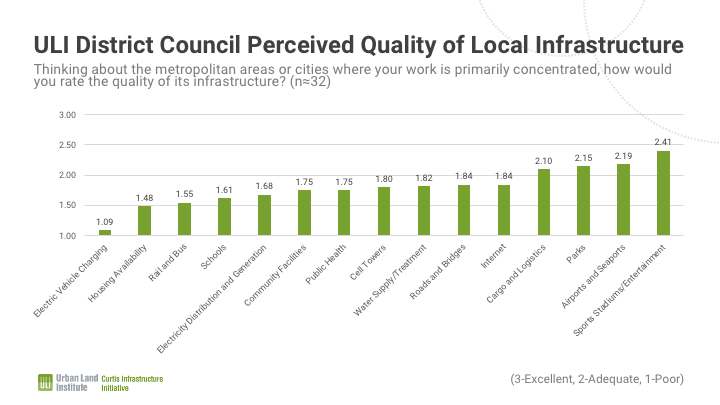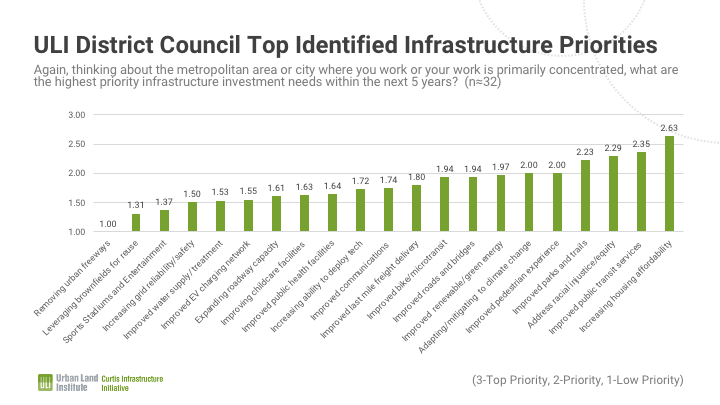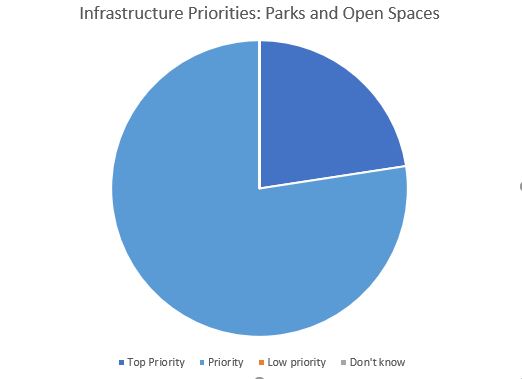Senior ULI staff members at the District Councils were asked three questions between February 8-February 17, 2021: to rate the quality of various kinds of infrastructure in their city or regions, to give the highest priority investment needs in their city in the next 5 years, and to say which trends in real estate development will most influence infrastructure in their city over the next 5 years.
The results from over 30 District Councils showed that of current quality, Stadiums and Entertainment Venues, Sea and Airports, Parks, and the Cargo & Logistics network were the highest rated, while Electric Vehicle Charging Networks was rated by far the worst, followed by Housing Availability and Rail & Bus Infrastructure.

Among identified infrastructure needs in their cities/metropolitan regions, increasing housing affordability and availability was the most highlighted response, the only item to score at a Top Priority. Other items which were rated highly as needs were Improved Parks, Trails, and Open Spaces, Addressing Racial Injustice, and Improved Public Transit Services (Bus and Rail). At the other end of the spectrum, Removing Urban Freeways, Leveraging Brownfields for re-use, and Improved Stadiums and Entertainment Venues all scored poorly, at Not a Priority. Increasing Electrical Grid Reliability and Safety was also among the lowest rated priorities; however, the majority of results were collected before the current crisis in Texas, which may likely would have changed perceptions.


While current quality of parks also rated highly, the fact that parks were also scored as a high-level need indicates the desire for the creation of more open spaces and parks. Conversely, Sports Stadiums and Entertainment Venues, which also scored as a top quality across the District Councils, was rated among the lowest for needs, implying a lack of appetite for further expansion of these facilities over other investment areas.
Finally, among factors which will influence infrastructure investment trends, the growing housing crisis, recovering from COVID-19, and the acceptance of remote work were named as the top influencing factors by the District Council respondents.

Overall, the 32 respondents to this survey represent a geographically diverse collection of ULI’s District Councils in cities and regions of varying size. The Curtis Infrastructure Initiative will be using these results to help guide the programming and research we do to support the District Councils, and we thank the District Councils for their participation.



